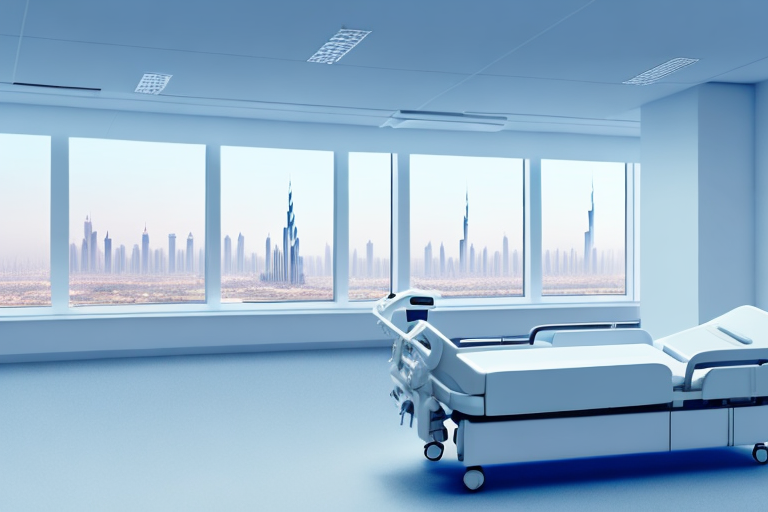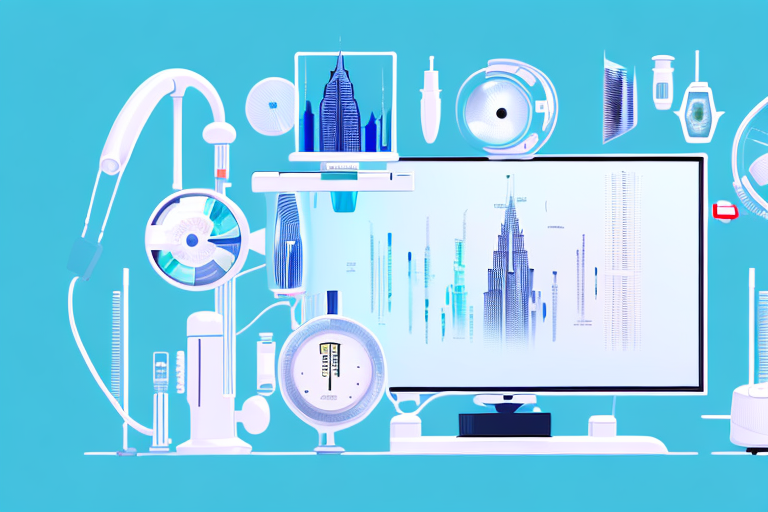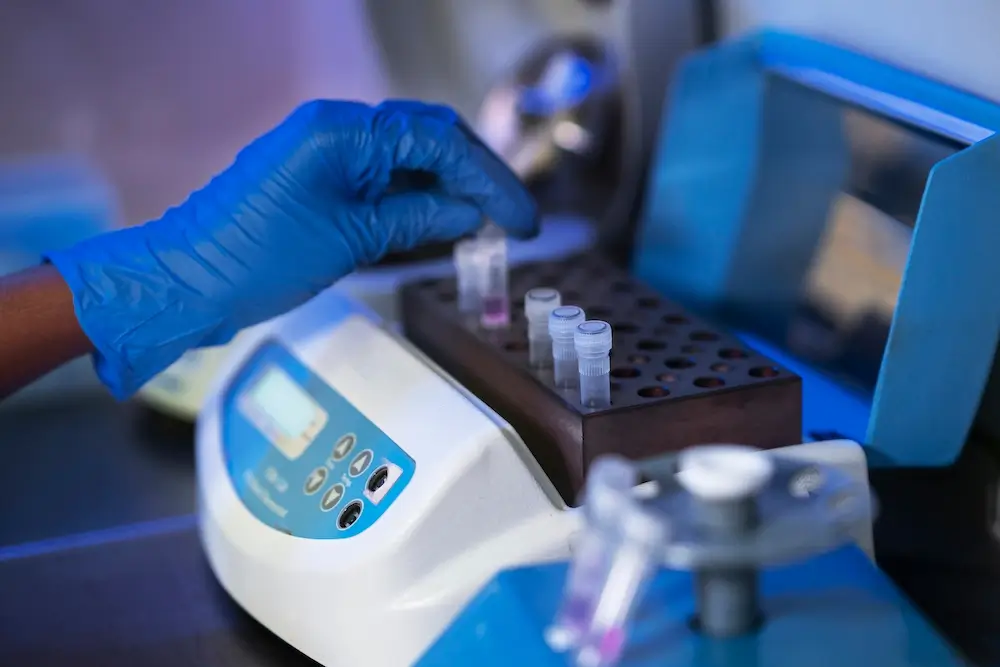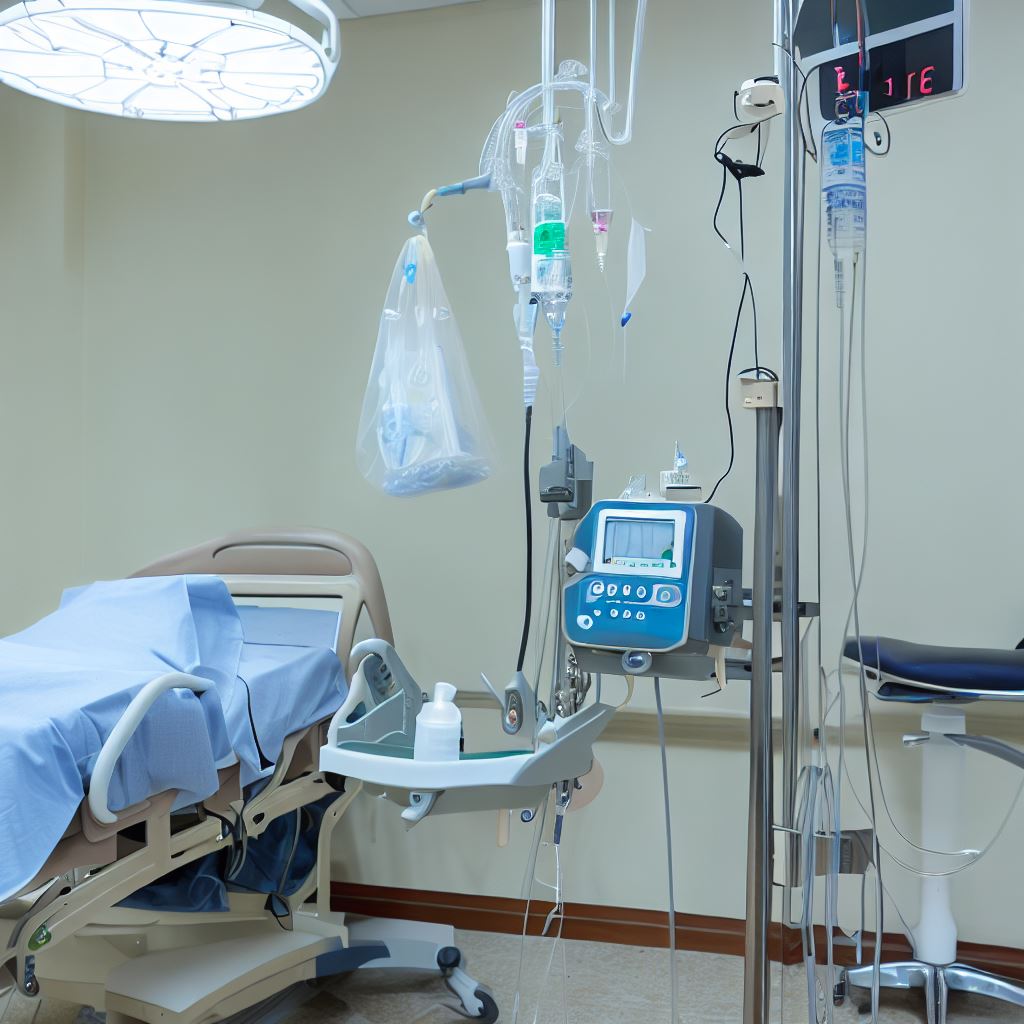Preview of Arab Health 2025: What to Expect
Experience the future of healthcare at Arab Health 2025. Uncover key highlights, themes, and tips to make the most of this groundbreaking event.

Introduction
The healthcare landscape is evolving rapidly, and Arab Health 2025 stands at the forefront of this transformation. As the largest gathering of healthcare professionals in the Middle East and North Africa, this event is a beacon for innovation, collaboration, and knowledge exchange. In this comprehensive preview, we'll explore what you can expect at Arab Health 2025 and how to make the most of this unparalleled opportunity.
What is Arab Health 2025?
Arab Health is an annual international healthcare exhibition and congress held in Dubai, UAE. It serves as a platform for the world's leading manufacturers, wholesalers, and distributors to meet the medical and scientific community in the Middle East and beyond.
Arab Health 2025 promises to be the most significant edition yet, showcasing the latest advancements in medical technology, patient care, and sustainable healthcare solutions.
Event Details
- Dates: January 29 – February 1, 2025
- Location: Dubai World Trade Centre, Dubai, UAE
- Website: Arab Health Official Site
- Expected Attendees: Over 100,000 healthcare professionals from 160+ countries
- Exhibitors: More than 4,000 companies showcasing cutting-edge products and services
What are the Key Highlights of Arab Health 2025?
Arab Health 2025 is poised to deliver an array of exciting features and programs designed to inform, inspire, and engage participants. The event is structured to cover various aspects of the healthcare industry, ensuring that there is something of value for every attendee.
1. Cutting-Edge Medical Innovations
At the heart of Arab Health is the exhibition of the latest medical technologies and innovations that are shaping the future of healthcare. In 2025, attendees can expect to witness:
Artificial Intelligence (AI) and Machine Learning Applications
AI and machine learning are revolutionizing the healthcare industry by enhancing diagnostic accuracy, personalizing treatment plans, and optimizing operational efficiency.
- Diagnostic Tools: AI-powered imaging systems that can detect anomalies in radiographs, MRIs, and CT scans with higher precision.
- Predictive Analytics: Tools that analyze patient data to predict disease outbreaks or individual health risks, enabling proactive interventions.
- Virtual Assistants: AI-driven chatbots and virtual nurses that assist in patient monitoring and provide timely information.
Robotics and Automation
The integration of robotics in healthcare is enhancing surgical precision and reducing human error.
- Surgical Robots: Systems like the da Vinci Surgical System that allow for minimally invasive procedures with enhanced dexterity.
- Automated Pharmacy Systems: Robotics that manage medication dispensing, reducing errors and wait times.
- Rehabilitation Robots: Devices that aid in patient recovery by assisting with physical therapy exercises.
Telemedicine and Remote Care Technologies
With the increasing need for accessible healthcare, telemedicine solutions are bridging the gap between patients and providers.
- Virtual Consultation Platforms: Secure video conferencing tools for remote patient consultations.
- Remote Monitoring Devices: Wearable sensors that transmit patient health data to providers in real-time.
- Mobile Health Apps: Applications that allow patients to manage appointments, access records, and receive health education.
Wearable Health Devices
Wearable technology is empowering patients to take control of their health.
- Fitness Trackers: Devices monitoring physical activity, heart rate, and sleep patterns.
- Medical Grade Wearables: Devices that track vital signs like blood glucose levels, blood pressure, and ECG.
- Smart Clothing: Textiles integrated with sensors for continuous monitoring of physiological parameters.
3D Printing in Medicine
3D printing is transforming personalized medicine and surgical planning.
- Custom Prosthetics and Implants: Tailor-made solutions that fit individual patient anatomy, improving comfort and functionality.
- Anatomical Models: Precise replicas of patient organs for surgical planning and education.
- Bioprinting: Emerging technology aiming to print tissues and organs for transplantation.
Genomics and Personalized Medicine
Advancements in genomics are paving the way for treatments tailored to individual genetic profiles.
- Genetic Testing Services: Identifying predispositions to diseases for early intervention.
- Pharmacogenomics: Optimizing drug therapy based on genetic makeup to enhance efficacy and reduce side effects.
- Gene Editing Technologies: Exploring CRISPR and other methods for potential cures to genetic disorders.
These innovations represent the forefront of medical technology, offering solutions that improve patient outcomes, reduce costs, and enhance the overall quality of healthcare services.
2. Sustainability Initiatives in Healthcare
Entity: Sustainability Initiatives
Attribute: Focus of Arab Health 2025
Value: Promoting eco-friendly healthcare solutions
Recognizing the global push towards sustainability, Arab Health 2025 places a strong emphasis on eco-friendly practices within the healthcare industry. Key areas of focus include:
Green Hospital Design
- Energy-Efficient Buildings: Implementing designs that reduce energy consumption through insulation, natural lighting, and efficient HVAC systems.
- Sustainable Materials: Using eco-friendly construction materials that are recyclable or have a lower environmental impact.
- Indoor Environmental Quality: Enhancing patient and staff well-being through improved air quality, acoustics, and ergonomic design.
Renewable Energy Integration
- Solar Power: Installing photovoltaic panels to harness solar energy for electricity needs.
- Wind Energy: Utilizing wind turbines where feasible to supplement energy requirements.
- Energy Storage Solutions: Implementing battery systems to store renewable energy for consistent supply.
Sustainable Medical Products
- Biodegradable Supplies: Transitioning to products that decompose naturally, reducing landfill waste.
- Reusable Instruments: Encouraging the use of sterilizable equipment instead of single-use items.
- Eco-Friendly Packaging: Reducing plastic use by adopting sustainable packaging materials.
Waste Management Solutions
- Medical Waste Segregation: Implementing systems to separate hazardous and non-hazardous waste for proper disposal.
- Recycling Programs: Encouraging recycling of paper, plastics, and metals within healthcare facilities.
- Waste-to-Energy Technologies: Exploring options to convert waste into usable energy.
Corporate Social Responsibility (CSR)
- Community Health Initiatives: Programs aimed at improving public health and access to care.
- Environmental Stewardship: Commitments to reducing carbon footprints and supporting environmental conservation efforts.
- Ethical Supply Chains: Ensuring products and services are sourced responsibly.
By bringing sustainability to the forefront, Arab Health 2025 encourages stakeholders to consider the long-term impact of their operations and to adopt practices that support the well-being of both people and the planet.
3. Leaders in the Spotlight
An integral part of Arab Health is the opportunity to hear from and interact with leaders who are at the helm of healthcare innovation and policy-making. The "Leaders in the Spotlight" segment includes:
Keynote Addresses
- Global Health Visionaries: Speakers who will share insights on addressing global health challenges, pandemics, and health equity.
- Technological Innovators: Pioneers in medical technology discussing the future landscape of healthcare delivery.
- Policy Makers: Government officials outlining strategies for healthcare reform, regulation, and funding.
Panel Discussions
- Healthcare Accessibility: Debates on how to make quality healthcare available to all, regardless of socioeconomic status.
- Ethics in Innovation: Exploring the moral implications of technologies like AI, genetic editing, and data privacy.
- Collaborative Care Models: Discussing integrated approaches that involve multidisciplinary teams for holistic patient care.
Fireside Chats
- Industry CEOs: Intimate conversations revealing personal leadership journeys, challenges faced, and lessons learned.
- Philanthropists: Sharing stories of impact through charitable initiatives and investments in healthcare.
Networking Sessions
- Roundtable Discussions: Small group settings to delve deeper into specific topics with experts.
- Meet and Greet Events: Opportunities to connect informally with speakers and peers.
This segment not only provides valuable knowledge but also inspires attendees by showcasing successful models of leadership and innovation.
4. Interactive Workshops and Conferences
Education and professional development are key components of Arab Health 2025. The event offers a comprehensive program of workshops and conferences designed to enhance skills, share best practices, and promote knowledge exchange.
Continuing Medical Education (CME) Conferences
- Specialty Tracks: Sessions focused on various medical fields such as cardiology, orthopedics, oncology, pediatrics, and more.
- Latest Research Findings: Presentations of cutting-edge studies, clinical trials, and emerging therapies.
- Clinical Guidelines Updates: Discussions on the latest recommendations and standards of care.
Hands-On Workshops
- Simulation Labs: Practical training using simulated environments and equipment.
- Procedure Demonstrations: Step-by-step walkthroughs of new surgical techniques or treatment methods.
- Technology Integration: Training on incorporating new technologies into clinical practice.
Innovation Hub
- Startup Showcases: Presentations by emerging companies introducing disruptive technologies.
- Pitch Competitions: Opportunities for startups to present their ideas to a panel of judges and potential investors.
- Mentorship Programs: Guidance from industry veterans to help startups navigate challenges.
Business Workshops
- Healthcare Management: Strategies for improving hospital administration, patient satisfaction, and staff engagement.
- Regulatory Compliance: Understanding local and international healthcare regulations and standards.
- Marketing and Branding: Techniques for effectively promoting healthcare services and products.
Digital Health Forums
- Cybersecurity in Healthcare: Addressing threats and protecting patient data in an increasingly digital environment.
- Big Data and Analytics: Leveraging data for population health management and predictive analytics.
- Patient Engagement Tools: Exploring platforms that enhance patient participation in their own care.
By participating in these educational offerings, attendees can stay at the forefront of their fields, earn professional credits, and bring valuable knowledge back to their organizations.
Why Should You Attend Arab Health 2025?
Attending Arab Health 2025 presents a multitude of benefits that extend beyond the four days of the event. Here are compelling reasons why you should consider being a part of this global gathering:
1. Stay Informed About Industry Trends
The healthcare industry is dynamic, with rapid advancements in technology and shifts in patient care paradigms. Arab Health provides an unparalleled opportunity to:
- Discover New Technologies: Engage directly with the latest medical devices and solutions before they are widely available.
- Understand Market Dynamics: Gain insights into industry trends, challenges, and opportunities through data presentations and expert analyses.
- Benchmark Against Best Practices: Learn from leading organizations about successful strategies and implementations, enabling you to improve your own practices.
2. Business and Networking Opportunities
Building relationships is a cornerstone of professional growth and business development. At Arab Health, you can:
- Connect with Global Professionals: Meet peers from around the world, expanding your professional network and opening doors to international collaboration.
- Engage with Suppliers and Distributors: Identify potential partners for procurement, distribution, or collaboration, enhancing your business prospects.
- Explore Investment Opportunities: Investors can discover promising startups and innovative projects seeking funding, while entrepreneurs can connect with potential backers.
3. Educational Advancement
For healthcare professionals, continuous learning is essential. Attendees can:
- Earn CME Credits: Participate in accredited sessions that contribute to your professional development requirements, ensuring you stay current in your field.
- Enhance Skills: Gain practical experience through workshops and demonstrations, improving your competence and confidence.
- Access Exclusive Content: Obtain materials and resources not readily available elsewhere, giving you a competitive edge.
4. Influence and Advocacy
Your presence at Arab Health allows you to:
- Voice Your Opinions: Participate in discussions that shape the future of healthcare policies and practices, influencing decisions that impact the industry.
- Contribute to Sustainability Efforts: Engage in initiatives focused on environmental responsibility within the industry, supporting global efforts to combat climate change.
- Support Innovation: Encourage the development of new solutions by providing feedback and support to innovators, fostering a culture of continuous improvement.
5. Cultural Experience
Dubai offers a unique blend of modernity and tradition:
- Explore the City: Take advantage of your visit to experience Dubai's iconic landmarks, such as the Burj Khalifa, Palm Jumeirah, and the Dubai Fountain.
- Global Cuisine: Enjoy a diverse culinary scene featuring cuisines from around the world, satisfying a variety of palates.
- Entertainment and Shopping: Indulge in world-class entertainment options and shopping experiences at venues like the Dubai Mall and Mall of the Emirates.
Attending Arab Health 2025 is an investment in your professional future, offering returns in knowledge, connections, and opportunities that can propel your career or business forward.
How to Register for Arab Health 2025
Registration is a straightforward process designed to accommodate various categories of attendees, including exhibitors, delegates, and visitors.
Step-by-Step Registration Guide
- Visit the Official Website: Navigate to the Arab Health 2025 official website.
- Select Your Category:
- Exhibitors: For companies showcasing their products and services.
- Delegates: For attendees interested in the conferences and workshops.
- Visitors: For those attending the exhibition only.
- Complete the Registration Form:
- Personal Information: Provide your full name, contact details, and professional credentials.
- Organization Details: Include information about your company or institution, including address and sector.
- Areas of Interest: Select the sectors or topics you are most interested in to receive tailored information and event updates.
- Choose Your Pass:
- Exhibition Pass: Grants access to the exhibition halls, allowing you to explore the exhibitor booths and attend certain open sessions.
- Conference Pass: Includes access to selected conferences and workshops, ideal for those seeking educational opportunities.
- All-Access Pass: Provides full access to all areas, including VIP events, networking sessions, and exclusive content.
- Payment:
- Early Bird Discounts: Register before the early bird deadline (typically a few months before the event) to receive discounted rates.
- Payment Methods: Secure online payment options are available, including credit/debit cards and bank transfers. Ensure you receive a receipt for your records.
- Confirmation:
- Email Confirmation: Upon successful registration and payment, you will receive a confirmation email with your registration details, pass information, and further instructions.
- Event App Access: You may be granted access to the event's mobile app or online platform, where you can plan your schedule and connect with other attendees.
Additional Registration Information
- Group Bookings: Discounts may be available for group registrations from the same organization. Contact the organizers directly for more information.
- Visa Assistance: International attendees can request support letters for visa applications if needed. Start the visa process early to avoid delays.
- Accommodation Packages: Special rates at partner hotels may be available through the event's website. Booking early ensures better availability and pricing.
- Accessibility Services: If you have specific accessibility needs, indicate them during registration to ensure appropriate accommodations are made.
On-Site Registration
While online registration is recommended, on-site registration is also available. However, it may involve longer wait times and higher fees.
Important: Always check the official website for the most up-to-date information on registration deadlines, fees, and policies. Keep an eye out for announcements regarding any changes due to unforeseen circumstances.
Tips for Maximizing Your Experience
Plan Ahead
- Create a Schedule: Identify sessions, workshops, and exhibitors of interest.
- Set Objectives: Define what you aim to achieve, whether it's networking, learning, or business development.
Leverage the Event App
- Stay Updated: Use the official Arab Health app for real-time updates and personalized schedules.
- Connect with Attendees: Network with other professionals through the app's messaging features.
Engage Actively
- Participate in Q&A Sessions: Engage with speakers and panelists to deepen your understanding.
- Visit the Innovation Hub: Explore cutting-edge start-ups and emerging technologies.
Network Strategically
- Attend Social Events: Join receptions and mixers to build relationships in a relaxed setting.
- Prepare Business Cards: Exchange contact information for future collaborations.
FAQs About Arab Health 2025
When and where is Arab Health 2025 taking place?
Arab Health 2025 is scheduled from January 29 to February 1, 2025, at the Dubai World Trade Centre in Dubai, UAE.
Who should attend Arab Health 2025?
Healthcare professionals, industry leaders, policymakers, investors, and anyone interested in the latest developments in the healthcare sector.
How can I exhibit at Arab Health 2025?
Visit the Exhibitor Information Page for details on booth packages and registration.
Why should I attend Arab Health 2025?
Attending offers numerous benefits, including staying informed about the latest industry trends, exploring business and networking opportunities, advancing your education through conferences and workshops, and contributing to discussions that shape the future of healthcare.
Are there opportunities for startups at Arab Health 2025?
Absolutely. The Innovation Hub provides a platform for startups and emerging companies to showcase their innovations, network with industry leaders, and connect with potential investors.
Is there support for international attendees regarding visas and accommodation?
The organizers often provide assistance with visa applications and offer special rates at partner hotels. It is advisable to check the official website for detailed information and to make arrangements well in advance.
Conclusion
Arab Health 2025 stands as a beacon for the global healthcare community, offering a platform where innovation meets opportunity. The event encapsulates the essence of what it means to be at the forefront of healthcare advancement, bringing together a diverse array of stakeholders united by a common goal: to enhance the quality of care and foster a healthier world.
From cutting-edge medical innovations to sustainability initiatives, from thought-provoking discussions to practical workshops, Arab Health 2025 promises a rich and immersive experience. It is not merely an event but a catalyst for change, inspiring attendees to think differently, collaborate effectively, and act decisively.
At Adamsmed, we are excited to be part of this journey. We recognize the value that such events bring to the industry and are committed to contributing our expertise and resources to drive positive outcomes.
We invite you to join us at Arab Health 2025, to engage, learn, and be inspired. Together, we can shape the future of healthcare.







